Welcome to Takasaki! It’s a vibrant city nestled in the heart of Gunma Prefecture, Japan. Known as the birthplace of the iconic Daruma doll, a symbol of good luck and perseverance, Takasaki has plenty on tap. This travel guide will unveil the top things to do in Takasaki, ensuring you have a memorable trip.
source: 5 AM Ramen on YouTube
Just an hour’s bullet train ride from Tokyo, Takasaki serves as an ideal getaway from the bustling metropolis. The city is surrounded by picturesque mountains, serene temples, and lush parks, making it ideal for both nature enthusiasts. From hiking up Mount Haruna to indulging in local culinary delights like Mizusawa Udon, you won’t be bored in Takasaki.
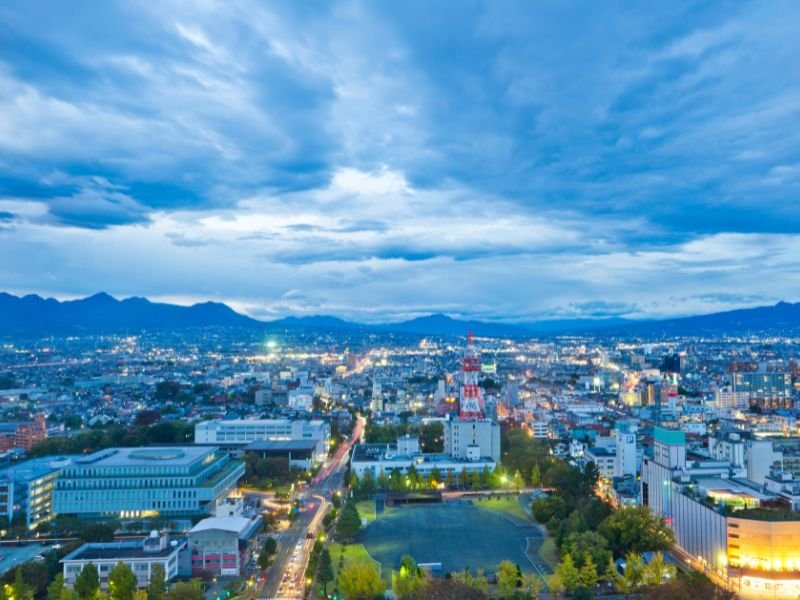
Why Visit Takasaki?
- Cultural Heritage: Explore ancient temples, shrines, and the origin of the Daruma doll.
- Natural Beauty: Hike scenic mountains and relax by tranquil lakes.
- Culinary Delights: Savor local specialties and fresh produce.
Tip: Plan your visit during spring or autumn to enjoy cherry blossoms or vibrant fall foliage, enhancing your travel experience!
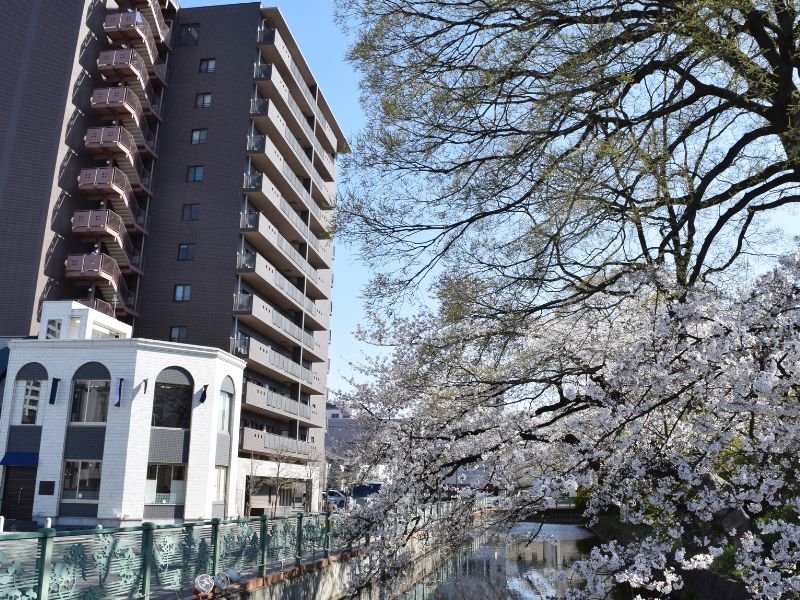
Top 20 Things To Do in Takasaki, Japan For Visitors
1. Explore Shorinzan Daruma-ji Temple
Shorinzan Daruma-ji Temple is the birthplace of the traditional Daruma doll, a symbol of perseverance and good fortune in Japan. Founded in 1697, this temple is dedicated to Bodhidharma, the founder of Zen Buddhism. As you wander through the temple grounds, you’ll encounter countless Daruma dolls of various sizes, each representing the unfulfilled wishes of visitors.
In the peaceful ambiance, you can learn about the history and significance of the Daruma doll. The temple’s architecture reflects traditional Japanese design, with intricate woodwork and serene gardens. It’s not just a spiritual site but also a cultural treasure that offers deep insights into Japanese traditions.
- Historical Significance: Discover the origins of the Daruma doll and its cultural impact.
- Daruma Market: Visit during the annual Daruma Market in January to experience local festivities.
- Scenic Views: Enjoy panoramic views of Takasaki from the temple’s elevated location.
Tip: Purchase a Daruma doll to make a wish; remember to fill in one eye upon setting your goal and the other once it’s achieved!
2. Visit Takasaki Byakue Dai-Kannon
Towering at 41.8 meters, the Takasaki Byakue Dai-Kannon is one of Japan’s largest statues of the Goddess of Mercy. This colossal white figure is not only a spiritual symbol but also an architectural marvel. Visitors can climb inside the statue up to the 9th floor, where windows offer breathtaking views of the surrounding landscape.
The interior houses 20 Buddhist statues on each floor, adding to the spiritual ambiance. The serene gardens surrounding the statue are perfect for a leisurely stroll, with cherry blossoms in spring and vibrant foliage in autumn. It’s a tranquil escape that combines spirituality with natural beauty.
- Panoramic Views: Climb inside the statue for stunning vistas of Takasaki and beyond.
- Spiritual Journey: Learn about Kannon, the Goddess of Mercy, and Buddhist teachings.
- Peaceful Gardens: Relax in the beautifully maintained grounds surrounding the statue.
Tip: Wear comfortable shoes for the climb inside the statue; it’s a bit of a workout but well worth the effort!
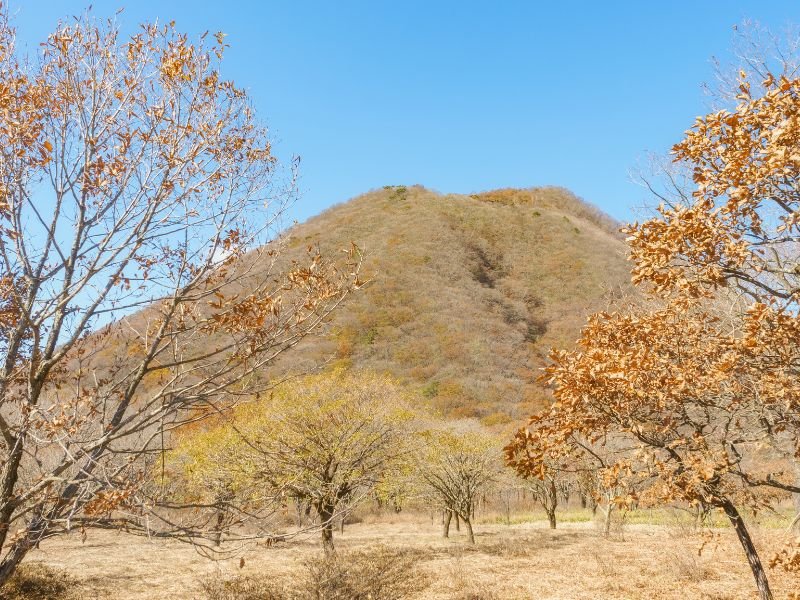
3. Hike Mount Haruna
Mount Haruna is one of the “Three Mountains of Jomo,” alongside Mount Akagi and Mount Myogi. Standing at 1,449 meters, it offers a variety of hiking trails suitable for all levels. The mountain is volcanic in origin, featuring unique rock formations and lush forests. At the summit, you’ll find Haruna Shrine, a sacred site dating back over 1,400 years.
The trails are well-marked and offer rest areas with scenic overlooks. Along the way, you might spot wildlife like deer and various bird species. The mountain is especially captivating during autumn when the leaves turn vibrant shades of red and gold.
- Diverse Trails: Choose from several hiking paths ranging from easy walks to challenging treks.
- Haruna Shrine: Visit this historic shrine nestled amidst towering cedar trees.
- Flora and Fauna: Experience the rich biodiversity of the region.
Tip: Check the weather forecast before your hike and consider starting early to avoid afternoon clouds obscuring the view!
4. Discover Haruna Shrine
Hidden deep within the forests of Mount Haruna, Haruna Shrine is a mystical place that seems untouched by time. The shrine is renowned for its stunning architecture, featuring intricate carvings and vibrant colors. The path leading to the shrine is lined with ancient cedar trees and moss-covered stone lanterns, creating a serene and spiritual atmosphere.
The shrine is dedicated to gods associated with water, fire, and agriculture, reflecting the local community’s historical reliance on these elements. Visitors often report a sense of tranquility and connection with nature while exploring the grounds.
- Architectural Beauty: Admire the detailed craftsmanship of the shrine’s structures.
- Spiritual Atmosphere: Feel the calming energy of this sacred site.
- Natural Surroundings: Enjoy the harmonious blend of architecture and nature.
Tip: Visit early in the morning to enjoy the shrine with fewer visitors and to hear the soothing sounds of nature!
5. Experience Takasaki City Gallery
Art enthusiasts will find a haven in the Takasaki City Gallery, which showcases a diverse collection of contemporary and traditional artworks. The gallery hosts rotating exhibitions, featuring both local and international artists. It’s an excellent place to immerse yourself in Japan’s vibrant art scene and gain new perspectives.
The facility also includes spaces for workshops and lectures, fostering a community of creativity and learning. Whether you’re an avid art lover or a casual visitor, the gallery offers something to pique your interest.
- Rotating Exhibits: Enjoy fresh and exciting displays throughout the year.
- Cultural Education: Learn about various art movements and techniques.
- Interactive Workshops: Participate in art classes and special events.
Tip: Check the gallery’s schedule online to see what’s on display during your visit and if any workshops require advance booking!
6. Shop at Takasaki Opa Mall
Located conveniently near Takasaki Station, Takasaki Opa Mall is a multi-story shopping complex that caters to all your retail needs. From fashion boutiques and electronics stores to bookstores and beauty shops, the mall offers a wide variety of options. The food court features both Japanese and international cuisines, making it a great spot to refuel.
The mall often hosts events, sales, and seasonal promotions, adding to the excitement. It’s an ideal place to shop for souvenirs, gifts, or simply indulge in some retail therapy.
- Wide Variety: Explore shops ranging from high-end brands to affordable outlets.
- Dining Options: Satisfy your palate with diverse culinary choices.
- Entertainment: Enjoy cinema, arcades, or attend live events.
Tip: Visit during weekdays to avoid crowds and take advantage of any weekday promotions or discounts!
7. Relax at Takasaki Park
Takasaki Park is a tranquil oasis amidst the urban landscape. The park features beautifully landscaped gardens, walking paths, and a serene pond inhabited by koi fish and ducks. It’s an ideal spot for a leisurely stroll, jogging, or simply sitting on a bench to read a book.
Seasonal flowers like cherry blossoms in spring and chrysanthemums in autumn add splashes of color. The park also includes playgrounds for children, making it a family-friendly destination.
- Seasonal Beauty: Enjoy different floral displays throughout the year.
- Family-Friendly: Let the kids play in safe, designated areas.
- Cultural Events: Attend festivals and performances hosted in the park.
Tip: Bring a blanket and some snacks for a relaxing picnic under the trees, especially during cherry blossom season!
8. Visit The Museum of Modern Art, Gunma
Designed by the renowned architect Arata Isozaki, The Museum of Modern Art, Gunma is as much a masterpiece as the artworks it houses. The museum showcases an impressive collection of modern and contemporary art, including paintings, sculptures, and multimedia installations.
Exhibitions often feature works by both Japanese and international artists, offering a global perspective. The museum also hosts educational programs, workshops, and lectures, enriching the visitor experience.
- Architectural Marvel: Appreciate the innovative design of the museum building.
- Diverse Collections: Explore various art forms and styles.
- Educational Opportunities: Enhance your understanding through guided tours and programs.
Tip: Photography may be restricted in certain areas; check with staff before snapping pictures to ensure compliance with museum policies!
9. Explore Dokutsukannon & Tokumeien
Dokutsukannon is a unique cave temple featuring a 17-meter high statue of Kannon carved directly into the rock face. The temple was established in 1919 by a local businessman who wanted to create a place of worship and peace. Adjacent to it is Tokumeien, a serene garden filled with stone statues, waterfalls, and lush greenery.
The combination of spiritual elements and natural beauty makes this site a peaceful retreat. The stone statues in the garden represent the 33 Kannon of Saigoku, adding cultural and historical depth to your visit.
- Cave Temple: Marvel at the impressive rock carvings and underground chambers.
- Stone Garden: Stroll through beautifully landscaped paths adorned with statues.
- Cultural Insight: Learn about Buddhist practices and the site’s history.
Tip: Wear comfortable walking shoes as the terrain can be uneven, and consider visiting on a weekday for a quieter experience!
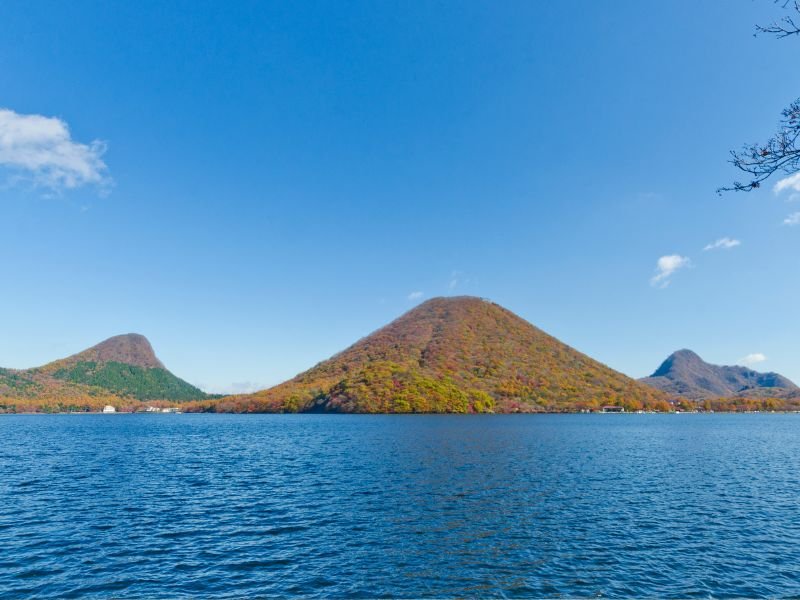
10. Enjoy Lake Haruna
Situated atop Mount Haruna, Lake Haruna is a picturesque caldera lake formed by volcanic activity. The lake offers various recreational activities such as boating, fishing, and camping. In winter, the lake sometimes freezes over, allowing for ice skating and winter festivals.
Surrounded by mountains, the lake provides a serene setting perfect for relaxation. The area is also dotted with restaurants and souvenir shops, making it a convenient spot to spend a leisurely day.
- Boating Activities: Rent swan-shaped paddle boats or rowboats.
- Seasonal Events: Attend the Lake Haruna Fireworks Festival in summer or winter illumination events.
- Local Cuisine: Try fresh fish dishes at lakeside eateries.
Tip: Visit during autumn to witness the stunning fall colors reflecting on the lake’s surface—it’s a photographer’s dream!
11. Visit Misato Shibazakura Park
Every spring, Misato Shibazakura Park transforms into a vibrant sea of pink as over 400,000 moss phlox flowers bloom. Covering approximately 100,000 square meters, the park offers panoramic views of the colorful landscape against the backdrop of Mount Akagi.
The park also hosts the Shibazakura Festival, featuring food stalls, live performances, and local crafts. It’s an ideal spot for picnics, photography, and enjoying the beauty of nature.
- Floral Wonderland: Experience the mesmerizing sight of pink moss phlox in full bloom.
- Panoramic Views: Capture stunning photos with mountainous scenery.
- Festival Atmosphere: Enjoy local food and entertainment during the festival.
Tip: The best time to visit is from mid-April to early May; check the bloom status online to plan your trip accordingly!
12. Explore Kannonyama Fruit Park
Kannonyama Fruit Park offers a delightful agricultural experience where visitors can pick their own seasonal fruits. Depending on the time of year, you can harvest strawberries, cherries, grapes, peaches, or apples. The park provides all the necessary equipment and guidance, making it accessible for all ages.
In addition to fruit picking, the park has a farmer’s market selling fresh produce and homemade goods. It’s both a fun and educational outing, especially for families.
- Fruit Picking: Enjoy the freshness of picking and eating fruits straight from the tree or vine.
- Farm Shop: Purchase jams, juices, and other local products.
- Picnic Areas: Relax and enjoy your harvest in designated spots.
Tip: Wear comfortable clothing and bring sunscreen, as you’ll be spending time outdoors. Also, arrive early as fruit picking is subject to availability!
13. Visit Gunma Glass Art Museum
The Gunma Glass Art Museum showcases stunning works of glass art from both Japanese and international artists. The collection includes intricate sculptures, contemporary pieces, and traditional glassware. The museum aims to promote glass art as a dynamic and expressive medium.
Workshops are available for those interested in creating their own glass art. Under the guidance of skilled artisans, you can try glass blowing or bead making, adding a hands-on element to your visit.
- Artistic Displays: Admire a wide range of glass artworks.
- Interactive Workshops: Participate in creating your own glass piece.
- Museum Shop: Purchase unique glass items as souvenirs.
Tip: Workshops may require reservations, so it’s advisable to book in advance if you’re interested in participating!
14. Experience Takasaki Festival
Held annually in early August, the Takasaki Festival is a vibrant celebration of the city’s culture and community. The festival features lively parades, traditional dances, taiko drumming, and a spectacular fireworks display. Streets are lined with food stalls offering local delicacies, and the atmosphere is electric.
It’s a fantastic opportunity to immerse yourself in local traditions and enjoy the festive spirit. The event attracts both locals and tourists, making it a highlight of Takasaki’s social calendar.
- Cultural Performances: Witness traditional dances like the “Takasaki Ondo.”
- Fireworks Display: Enjoy a dazzling show that lights up the night sky.
- Street Food: Indulge in festival favorites like yakitori, takoyaki, and shaved ice.
Tip: Arrive early to secure a good spot for viewing the parade and fireworks, and wear comfortable shoes for walking!
15. Tour the Takasaki City Museum of History
The Takasaki City Museum of History offers a comprehensive look into the region’s past. Exhibits cover various periods, from prehistoric times to the modern era. Artifacts include ancient pottery, samurai armor, historical documents, and everyday items that illustrate the city’s development.
Interactive displays and dioramas make the museum engaging for visitors of all ages. Special exhibitions are held periodically, focusing on specific themes or historical events.
- Educational Exhibits: Learn about Takasaki’s evolution over the centuries.
- Interactive Displays: Engage with hands-on activities suitable for children.
- Special Exhibitions: Experience in-depth looks at particular aspects of history.
Tip: English descriptions may be limited; consider bringing a translation app or guidebook to enhance your experience!
16. Visit the Takasaki Daruma Market
Taking place on January 6th and 7th annually, the Takasaki Daruma Market is one of the largest Daruma doll markets in Japan. The event attracts over 100,000 visitors who come to purchase Daruma dolls for good luck in the new year. The streets are filled with stalls selling Daruma of all sizes and colors.
The market isn’t just about shopping; it’s a cultural experience complete with traditional music, performances, and a festive atmosphere. It’s an excellent way to start the year with positive energy.
- Unique Souvenirs: Find Daruma dolls in various designs.
- Cultural Immersion: Participate in rituals and learn about the doll’s significance.
- Festive Atmosphere: Enjoy live performances and traditional entertainment.
Tip: Bring cash as many vendors may not accept credit cards, and don’t hesitate to haggle politely for a better price!
17. Enjoy Onsen at Yamada Onsen
Yamada Onsen is a traditional Japanese hot spring located in a serene natural setting. The mineral-rich waters are said to have healing properties, beneficial for skin ailments and muscle relaxation. The onsen offers both indoor and outdoor baths, allowing you to soak while enjoying views of the surrounding nature.
The facility is well-maintained and provides amenities like towels and toiletries. It’s an ideal place to unwind after a day of sightseeing.
- Therapeutic Waters: Experience the healing benefits of natural hot springs.
- Scenic Views: Relax in outdoor baths with picturesque surroundings.
- Cultural Experience: Embrace Japanese bathing customs in a tranquil setting.
Tip: Familiarize yourself with onsen etiquette, such as washing before entering the bath and not wearing swimwear unless specified!
18. Explore the Usui Pass Railway Heritage Park
A short trip from Takasaki, the Usui Pass Railway Heritage Park is dedicated to the history of Japan’s railway system. The park features a collection of vintage trains, including steam locomotives and electric engines. Interactive exhibits explain the engineering feats achieved in constructing the Usui Pass railway line.
Visitors can ride a mini train that offers a scenic tour of the park. The site also includes a play area for children, making it a family-friendly destination.
- Historic Trains: View and explore a variety of old locomotives.
- Train Rides: Enjoy a ride on a mini steam train.
- Educational Exhibits: Learn about the technological advancements in railway history.
Tip: Check the train ride schedules upon arrival to plan your visit efficiently, and wear comfortable shoes for walking around the expansive park!
19. Visit Ikaho Onsen
Located about an hour from Takasaki, Ikaho Onsen is a historic hot spring town famous for its stone steps and golden-colored hot springs. The town’s main street is a staircase with 365 steps, lined with traditional inns, shops, and game arcades. The iron-rich waters are believed to have health benefits.
Ikaho Shrine sits at the top of the steps, offering spiritual solace and panoramic views. The town exudes a nostalgic atmosphere, making it a delightful place to explore.
- Stone Steps Street: Wander through the heart of the town along the iconic steps.
- Golden Hot Springs: Soak in the unique iron-rich waters.
- Cultural Sites: Visit shrines and historical buildings.
Tip: Spend a night in a ryokan (traditional inn) to fully experience Ikaho’s charm, complete with kaiseki meals and onsen access!
20. Take a Sake Brewery Tour at Tsuchida Brewery
End your Takasaki adventure with a visit to Tsuchida Brewery, a family-owned sake producer with a history spanning over 150 years. The brewery focuses on traditional methods, using locally sourced rice and natural fermentation processes. Guided tours provide insights into sake production, from rice polishing to bottling.
After the tour, you can sample different varieties of sake, each with its unique flavor profile. The brewery shop offers bottles for purchase, making for excellent souvenirs or gifts.
- Guided Tours: Learn about traditional sake brewing techniques.
- Tasting Sessions: Discover the nuances of different sake types.
- Shop: Purchase limited-edition or seasonal sakes.
Tip: Book your tour in advance, especially during peak tourist seasons, and consider arranging transportation as alcohol consumption is involved!
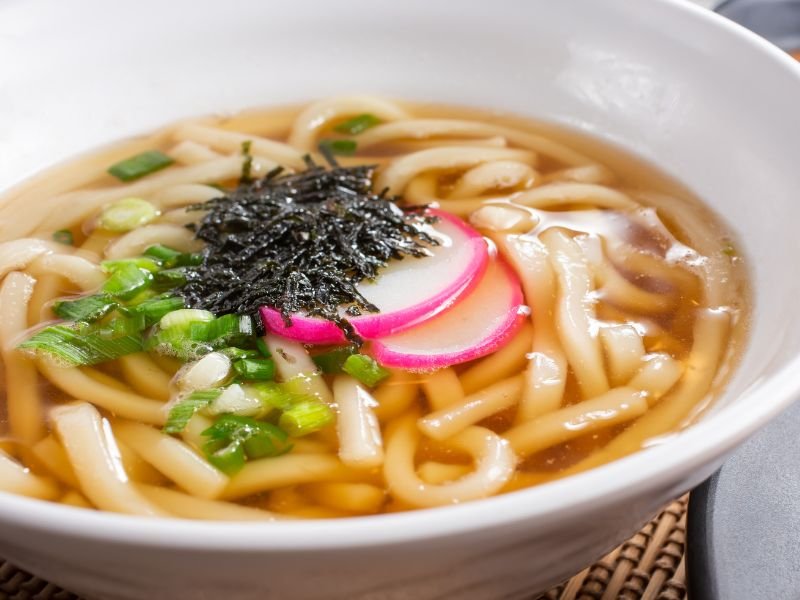
What To Eat and Drink in Takasaki, Japan
Savor Local Delicacies
Takasaki’s culinary scene offers a delightful array of traditional Japanese dishes and regional specialties that cater to all tastes.
Mizusawa Udon
Indulge in Mizusawa Udon, one of Japan’s top three udon varieties alongside Sanuki and Inaniwa udon. Made with high-quality wheat flour and local spring water, the noodles are thick, chewy, and have a smooth texture. They’re typically served cold with a dipping sauce or hot in a savory broth.
- Authentic Taste: Experience noodles made using centuries-old techniques.
- Serving Styles: Enjoy cold with soy-based dipping sauce or hot in broth.
- Local Restaurants: Visit specialized udon shops for the best experience.
Tip: Pair your udon with tempura vegetables or shrimp for a complete meal!
Yakimanju
A popular local snack, Yakimanju consists of steamed buns skewered on sticks, coated with a sweet miso glaze, and grilled over charcoal. The result is a slightly crispy exterior with a soft, fluffy interior, offering a unique sweet and savory flavor.
- Unique Flavor: Enjoy the blend of sweet miso and soft bread.
- Variety: Some versions come with fillings like sweet bean paste.
- Street Food Experience: Often sold at festivals and street stalls.
Tip: Best enjoyed hot off the grill; be cautious as the filling can be very hot!
Local Sake
Takasaki is home to several sake breweries producing high-quality rice wine using locally grown rice and pure water from nearby mountains.
- Flavor Profiles: Explore a range from dry to sweet sakes.
- Brewery Visits: Take tours to learn about the brewing process.
- Food Pairing: Enhance your meal by pairing sake with local dishes.
Tip: If you’re unsure which sake to try, ask for recommendations based on your taste preferences!
Fresh Produce
The fertile lands around Takasaki yield an abundance of fresh fruits and vegetables.
- Seasonal Fruits: Enjoy strawberries, peaches, grapes, and apples from local farms.
- Farmers’ Markets: Visit markets to buy fresh produce directly from growers.
- Local Honey: Try honey produced from wildflowers in the region.
Tip: Fruit picking experiences are available at local farms; it’s a fun way to enjoy fresh produce!

Tours For Visitors To Takasaki, Japan
Enhance Your Experience with Guided Tours
Joining a tour can enrich your understanding of Takasaki’s attractions and provide unique insights.
Cultural Heritage Tours
Delve deep into Takasaki’s storied past with cultural heritage tours that take you to some of the city’s most significant historical sites. These tours offer an in-depth look at temples, shrines, and landmarks, providing context and stories that bring these places to life. Guides often share legends, anecdotes, and historical facts that you won’t find in guidebooks.
- Expert Guidance: Led by local historians or certified guides who are passionate about Takasaki’s heritage. They’ll answer your questions and provide fascinating details about each site.
- Inclusive Itineraries: Visit key locations such as Shorinzan Daruma-ji Temple, Haruna Shrine, and the Takasaki Byakue Dai-Kannon statue. Some tours also include lesser-known temples and historical neighborhoods.
- Language Options: Many tours offer guides fluent in English, Chinese, or Korean, ensuring you won’t miss any important information due to language barriers.
Tip: Book your cultural heritage tour at least a few days in advance, especially during peak tourist seasons, to secure your spot and preferred language option. Don’t forget to wear comfortable shoes, as these tours often involve a fair amount of walking!
Food and Sake Tasting Tours
Experience the culinary delights of Takasaki with food and sake tasting tours that introduce you to the city’s gastronomic treasures. These tours not only allow you to taste a variety of local dishes but also provide background on the ingredients, preparation methods, and cultural significance of each food item.
- Culinary Exploration: Visit bustling markets, traditional restaurants, and quaint street food stalls. Sample specialties like Mizusawa Udon, Yakimanju, and seasonal fruits from local farms.
- Hands-On Experiences: Some tours include cooking classes where you can learn to make udon noodles or traditional sweets. Others offer sake brewing workshops where you can see the fermentation process firsthand.
- Local Insights: Guides often take you to hidden gems known only to locals, such as family-run eateries and sake breweries like Tsuchida Brewery, where you can interact with the owners and artisans.
Tip: Inform the tour operator of any dietary restrictions or allergies when booking. This ensures they can accommodate your needs and provide a safe, enjoyable experience. Also, bring a small notebook to jot down names of dishes and places you might want to revisit!
Nature and Outdoor Tours
For those who love the great outdoors, Takasaki offers nature and outdoor tours that showcase the area’s stunning landscapes and biodiversity. These tours are perfect for adventure seekers and anyone looking to appreciate the natural beauty surrounding the city.
- Hiking Adventures: Explore Mount Haruna with a knowledgeable guide who can point out interesting flora and fauna, as well as share stories about the mountain’s history and spiritual significance. Some tours may also include a visit to Haruna Shrine.
- Cycling Tours: Enjoy leisurely bike rides through picturesque countryside, along the Karasu River, or around Lake Haruna. Guides ensure safe routes and may provide background on the areas you pass through.
- Wildlife Observation: Participate in bird-watching tours or visit natural parks where you can see local wildlife in their natural habitats. Guides can help you spot and identify various species.
Tip: Wear appropriate outdoor clothing and sturdy footwear. Don’t forget essentials like sunscreen, a hat, and insect repellent. It’s also wise to bring a refillable water bottle and some snacks for longer tours!
Custom Private Tours
For a personalized and flexible experience, consider booking a custom private tour. These tours are tailored to your specific interests and allow you to set the pace and itinerary.
- Flexible Itinerary: Whether you’re interested in art, history, food, or shopping, the tour can be customized to include the sites and activities you most want to experience.
- Personal Attention: With a private guide, you’ll receive one-on-one attention, making it easier to ask questions and engage in deeper conversations about the culture and history.
- Convenience: Arrange pick-up and drop-off at your accommodation, and enjoy the comfort of private transportation between sites.
Tip: Communicate your interests and any special requests to the tour operator in advance. This helps them plan the perfect itinerary for you. Also, consider the duration you prefer; private tours can range from a few hours to a full day!
Spiritual and Wellness Tours
Embrace the spiritual side of Takasaki with tours focused on wellness and inner peace. These experiences often combine visits to sacred sites with activities that promote relaxation and mindfulness.
- Temple Stays: Participate in overnight stays at temples like Shorinzan Daruma-ji, where you can join in meditation sessions, morning prayers, and traditional vegetarian meals.
- Zen Meditation and Yoga: Join guided meditation or yoga classes set in serene environments, sometimes outdoors amidst nature or within historic temple grounds.
- Onsen Experiences: Some tours include visits to local hot springs like Yamada Onsen or nearby Ikaho Onsen, where you can soak in therapeutic waters and learn about Japanese bathing rituals.
Tip: These tours may require advance booking and adherence to specific etiquette, especially within temple grounds. Be respectful of customs, and don’t hesitate to ask your guide for guidance on proper behavior!
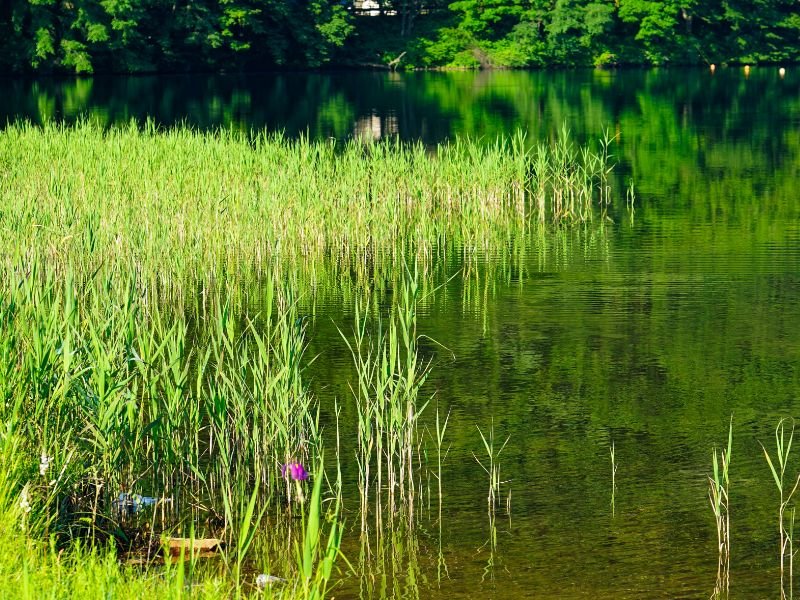
Takasaki Accommodations Guide: Hotels, Guesthouses, and Hostels
Find Your Perfect Stay
Whether you’re seeking luxury or traveling on a budget, Takasaki offers a variety of accommodations to suit your needs.
Takasaki Washington Hotel Plaza
Conveniently located just a few minutes’ walk from Takasaki Station, the Takasaki Washington Hotel Plaza is a popular choice for both business and leisure travelers. The hotel’s modern design and efficient service ensure a comfortable stay.
- Amenities: Guests enjoy free high-speed Wi-Fi throughout the hotel, an on-site restaurant serving a variety of Japanese and Western dishes, and coin-operated laundry facilities for convenience.
- Comfortable Rooms: Each room is well-appointed with air conditioning, a flat-screen TV, a mini-fridge, and a work desk. The beds are comfortable, ensuring a good night’s sleep.
- Business Facilities: For those traveling on business, the hotel offers meeting rooms, photocopying services, and a business center equipped with computers and printers.
Tip: Book directly through the hotel’s website or authorized booking platforms to access special deals. Early booking can sometimes include perks like complimentary breakfast or late check-out!
Hotel Coco Grand Takasaki
For travelers seeking a touch of luxury, Hotel Coco Grand Takasaki offers a boutique experience with meticulous attention to detail. The hotel combines modern amenities with elegant decor inspired by European and Asian styles.
- Facilities: Indulge in the hotel’s spa services, including massage treatments and a relaxation lounge. The natural hot springs (onsen) on-site provide a serene environment to unwind.
- Room Features: Each room is thoughtfully designed, featuring massage chairs, air purifiers, high-quality bedding, and even foot massagers. Complimentary toiletries are high-end, and rooms often include a private balcony.
- Location: The hotel is directly connected to Takasaki Station via a pedestrian bridge, offering unparalleled convenience for travelers. Nearby shopping centers and restaurants are easily accessible.
Tip: For an extra special experience, consider booking a deluxe room or suite that includes a private open-air bath (rotenburo). These rooms offer additional space and luxury amenities!
Harunako Onsen Yusuge
Experience the essence of traditional Japanese hospitality at Harunako Onsen Yusuge, a charming ryokan nestled near Lake Haruna. This accommodation offers an authentic cultural experience, complete with tatami-mat rooms and kaiseki dining.
- Authentic Experience: Stay in rooms featuring traditional shoji screens and futon bedding. The minimalist decor creates a peaceful atmosphere, allowing you to immerse yourself in Japanese culture.
- Hot Springs: The ryokan boasts both indoor and outdoor onsen baths. Soak in mineral-rich waters while enjoying panoramic views of the lake and surrounding mountains.
- Cultural Activities: Guests can participate in tea ceremonies, dress in yukata robes provided by the ryokan, or join seasonal events and workshops on traditional crafts.
Tip: To fully enjoy the ryokan experience, book a package that includes both dinner and breakfast. Kaiseki meals are a highlight, featuring multiple courses of meticulously prepared dishes using local, seasonal ingredients!
Guesthouses and Hostels
Budget-conscious travelers or those seeking a more communal experience can choose from several guesthouses and hostels in Takasaki. These accommodations offer basic amenities in a friendly, social environment.
- Cost-Effective: Hostels and guesthouses provide affordable rates, freeing up your budget for other activities. Shared dormitory rooms are the most economical option, while private rooms offer more privacy at a slightly higher cost.
- Communal Spaces: Common areas like lounges, kitchens, and gardens are great places to meet fellow travelers. Many establishments host social events like movie nights or group dinners.
- Basic Amenities: While amenities are simpler compared to hotels, essentials like free Wi-Fi, secure lockers, and laundry facilities are typically available. Some even offer free breakfast or bike rentals.
Tip: Read recent reviews to get a sense of the cleanliness, safety, and atmosphere of the hostel or guesthouse. Booking platforms often provide detailed descriptions and photos to help you make an informed choice!
Airbnb Options
For those who prefer a homier atmosphere, renting through Airbnb can provide unique accommodations ranging from cozy apartments to entire houses.
- Local Living: Staying in a residential neighborhood allows you to experience daily life in Takasaki. You might discover local cafes, parks, and shops off the typical tourist path.
- Variety: Airbnb listings in Takasaki include traditional Japanese houses with tatami rooms, modern apartments with city views, and countryside homes surrounded by nature.
- Personal Touches: Hosts often provide thoughtful amenities like local snacks, maps, and recommendations for their favorite spots in the city. Some may even offer guided tours or cooking classes.
Tip: Communicate with your host before booking to clarify check-in procedures, house rules, and any other questions you might have. Ensure the listing has a good number of positive reviews for a reliable experience!
Camping and Glamping
For nature lovers, Takasaki offers camping sites and glamping experiences, especially around Lake Haruna and Mount Haruna.
- Traditional Camping: Set up your tent under the stars at designated campsites equipped with basic facilities like restrooms and showers. It’s an affordable way to enjoy the great outdoors.
- Glamping: For a more luxurious outdoor stay, opt for glamping options that provide furnished tents or cabins with comfortable beds, electricity, and sometimes even private bathrooms.
- Activities Included: Some sites offer additional activities like fishing, barbecue facilities, canoeing, or guided nature walks.
Tip: Check the availability and book in advance, especially during peak seasons like summer and autumn. Also, be prepared for varying weather conditions by bringing appropriate gear and clothing!
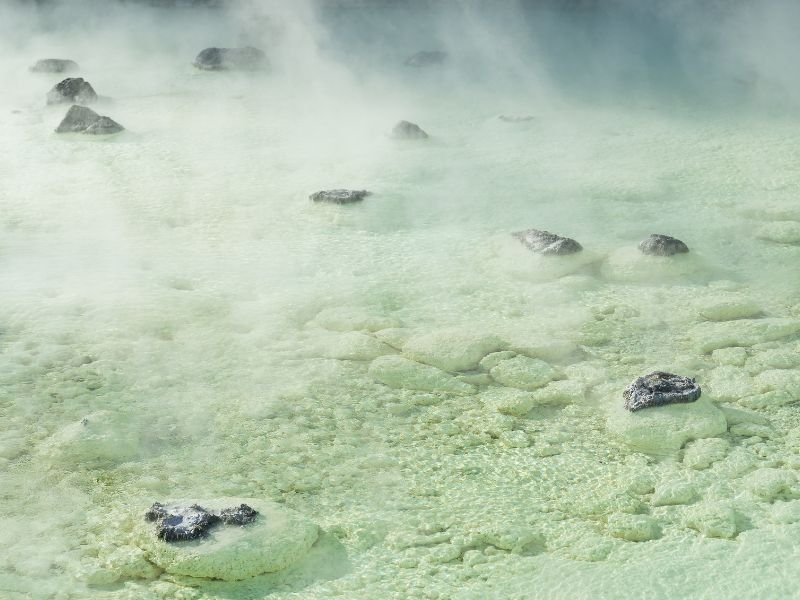
Day Trips From Takasaki, Japan
Explore Beyond the City
Takasaki’s strategic location makes it an excellent base for exploring nearby attractions.
Tomioka Silk Mill
Step back in time at the Tomioka Silk Mill, a UNESCO World Heritage site that played a pivotal role in Japan’s modernization during the Meiji era. Established in 1872, it was Japan’s first modern silk reeling factory and is remarkably well-preserved.
- Historical Significance: Learn about Japan’s industrial revolution and how the mill contributed to making Japanese silk renowned worldwide. The site includes several original buildings, such as the silk reeling mill, cocoon warehouses, and worker dormitories.
- Guided Tours: Available in multiple languages, these tours provide in-depth insights into the silk production process, the lives of the workers, and the technological innovations of the time.
- Interactive Exhibits: See original machinery in action, watch demonstrations of silk reeling, and view exhibits displaying historical artifacts and documents.
Tip: Wear comfortable shoes as the tour involves considerable walking on uneven surfaces. Allocate at least two to three hours to fully explore the site. Consider visiting the nearby Gunma Museum of Natural History to complement your trip!
Kusatsu Onsen
Renowned as one of Japan’s top hot spring resorts, Kusatsu Onsen is famous for its high-quality, mineral-rich waters that are said to cure various ailments. The town exudes a traditional atmosphere, with wooden buildings and narrow streets.
- Yubatake: The centerpiece of Kusatsu Onsen, Yubatake is a large hot water field where steaming waters cascade over wooden conduits. It’s a spectacular sight, especially at night when illuminated.
- Public Baths: Experience authentic onsen culture by visiting any of the free public baths scattered around town. For a more luxurious experience, try the larger bathhouses like Sainokawara Rotenburo, which offers expansive outdoor pools.
- Traditional Streets: Stroll through streets lined with souvenir shops, eateries serving local delicacies like onsen manju (steamed buns), and traditional inns (ryokan).
Tip: Don’t miss the yumomi performance at Netsunoyu, where you can watch (or join) a traditional method of cooling down hot spring water using wooden paddles, accompanied by folk songs. Check the schedule in advance!
Mount Myogi
Adventure awaits at Mount Myogi, known for its dramatic rock formations and challenging hiking trails. It’s considered one of Japan’s three most rugged mountains, offering breathtaking views and thrilling experiences.
- Hiking Trails: Choose from several trails varying in difficulty. The beginner-friendly Shinrin Trail offers scenic views without the need for climbing gear, while more advanced trails like the Kanto Fureai Trail require experience and proper equipment.
- Rock Climbing: The mountain’s jagged peaks and cliffs make it a popular spot for seasoned climbers. Guided climbing tours are available for those looking to tackle more technical routes.
- Scenic Views: Enjoy panoramic vistas of the surrounding countryside, especially stunning during autumn when the foliage turns vibrant shades of red and gold.
Tip: Due to the challenging terrain, it’s advisable to hike with a companion or hire a local guide. Ensure you have appropriate footwear, safety gear, and check weather conditions before setting out. Some trails may be closed during certain seasons for safety reasons!
Minakami
Minakami is an outdoor enthusiast’s paradise, offering a range of activities throughout the year. Nestled in the mountains, it’s known for its pristine natural environment and adventure sports.
- Rafting and Canyoning: In spring and summer, tackle the rapids of the Tone River on a white-water rafting trip or explore waterfalls and gorges through canyoning tours led by professional guides.
- Skiing and Snowboarding: Winter transforms Minakami into a snowy wonderland with several ski resorts like Minakami Kogen Ski Resort offering slopes for all levels.
- Tanigawadake Ropeway: Take a scenic ride up Mount Tanigawa, where you can enjoy hiking trails, alpine flowers, and stunning views. The area is also famous for its fall foliage.
Tip: Book adventure activities in advance, especially during peak seasons. Check if the tour operators provide necessary equipment or if you need to bring your own. Don’t forget to pack appropriate clothing for the season and activity!
Ikaho Green Bokujo
Perfect for families, Ikaho Green Bokujo is an expansive farm theme park where visitors can interact with animals and enjoy outdoor activities.
- Animal Encounters: Feed and pet farm animals like sheep, goats, rabbits, and horses. There are also shows featuring sheepdogs and sheep shearing demonstrations.
- Outdoor Activities: Enjoy horseback riding, archery, mini-golf, and a large playground. Seasonal activities like fruit picking are also available.
- Farm-to-Table Dining: Savor fresh dairy products like ice cream and cheese made on-site. The park’s restaurant offers dishes prepared with locally sourced ingredients.
Tip: Wear comfortable clothing suitable for outdoor activities and animal interactions. Check the park’s schedule for special events or seasonal activities to enhance your visit!
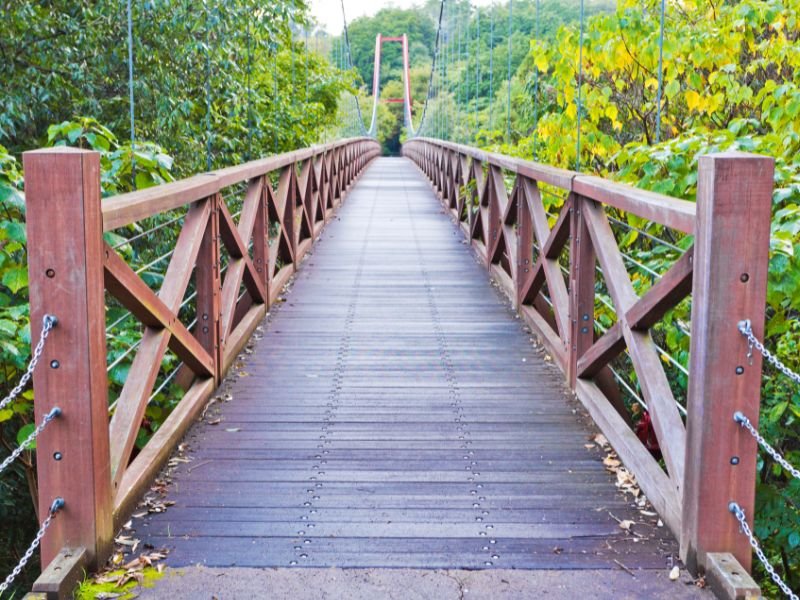
Takasaki Transportation Guide
Getting Around with Ease
Understanding the transportation options will make your Takasaki trip smooth and enjoyable.
By Train
Takasaki Station is a major railway hub, providing access to both local and long-distance destinations. The station is served by several lines operated by JR East.
- Shinkansen (Bullet Train): The Joetsu Shinkansen and Hokuriku Shinkansen lines connect Takasaki to Tokyo in about an hour and extend to destinations like Niigata and Kanazawa. These high-speed trains are comfortable and punctual.
- Local Lines: Lines such as the Shin’etsu Main Line, Ryomo Line, and Agatsuma Line provide access to nearby cities and attractions, including Maebashi, Shibukawa, and Kusatsu Onsen.
- IC Cards: Use rechargeable IC cards like Suica or Pasmo for convenient tap-and-go access on trains and buses. They can be purchased and recharged at ticket machines in the station.
Tip: If you plan to travel extensively by train, consider purchasing a JR East Pass or a Japan Rail Pass for unlimited rides within certain regions or nationwide. Reserve your Shinkansen seats in advance during peak seasons to ensure availability!
By Bus
Buses are an essential mode of transportation for reaching areas not serviced by trains, such as remote attractions and mountainous regions.
- City Buses: Operated by Gunma Bus and other companies, these buses connect major sites within Takasaki, including tourist attractions, shopping centers, and residential areas.
- Highway Buses: Long-distance buses provide affordable travel to cities like Tokyo, Nagoya, and Osaka. They often offer overnight options, saving you accommodation costs.
- Fares: Payable by cash or IC cards. Fares are usually based on distance traveled. Some buses have fixed rates within city zones.
Tip: Keep small change handy if paying by cash, as some buses do not provide change for large bills. Bus schedules can be less frequent on weekends and holidays, so plan accordingly. Obtain a bus route map from the tourist information center for convenience!
By Car
Renting a car offers the most flexibility, especially if you’re planning to explore rural areas, mountains, or undertake day trips at your own pace.
- Rental Agencies: Major companies like Toyota Rent a Car, Nissan Rent-A-Car, and local agencies have offices near Takasaki Station. Advance booking can be done online.
- Driving Conditions: Roads in Takasaki and Gunma Prefecture are well-maintained. Signs are often in both Japanese and English. However, be cautious when driving in mountainous areas due to narrow roads and sharp curves.
- Parking: Available at most attractions, hotels, and shopping centers. Parking fees vary; some places offer free parking, while others charge hourly rates.
Tip: An International Driving Permit (IDP) is required for foreign visitors wishing to drive in Japan. Always carry your IDP and passport while driving. Familiarize yourself with Japanese traffic rules, such as driving on the left side of the road!
By Bicycle
Cycling is an eco-friendly and enjoyable way to explore Takasaki, especially on sunny days.
- Bike Rentals: Available at some hotels, bike shops, and near Takasaki Station. Rates are usually hourly or daily, and electric bikes may also be available.
- Bike Paths: Dedicated cycling lanes exist in certain areas, and the city’s relatively flat terrain makes for easy riding. Scenic routes along the Karasu River or around Takasaki Park are popular.
- Safety: Helmets are recommended but not mandatory. Always follow traffic signals and be mindful of pedestrians when riding on shared paths.
Tip: Lock your bike securely when parked to prevent theft. Some attractions offer designated bicycle parking areas. It’s also wise to carry a raincoat or poncho in case of sudden weather changes!
Taxis
Taxis offer a convenient but more expensive option for short distances or when public transport is not available.
- Availability: Easily found at taxi stands near train stations, major hotels, and busy areas. You can also hail one on the street if the rooftop light is illuminated.
- Fares: Metered with an initial base fare, followed by incremental charges based on distance and time. Rates may increase during late-night hours.
- Ride-Hailing Apps: Services like JapanTaxi or DiDi allow you to book taxis via smartphone apps, sometimes offering English interfaces.
Tip: Have your destination written in Japanese or show a map to the driver, as not all taxi drivers speak English. Tipping is not customary in Japan, so exact change is appreciated!
On Foot
Takasaki’s city center is quite walkable, with many attractions, shops, and restaurants located within reasonable distances from each other.
- Walking Tours: Consider joining a guided walking tour to learn more about the city’s history and culture while getting some exercise.
- Pedestrian Areas: Streets around Takasaki Station and shopping districts are pedestrian-friendly, with wide sidewalks and crosswalks.
- Safety: Japan is generally safe for pedestrians, but always be cautious at intersections and follow traffic signals.
Tip: Wear comfortable shoes and carry a small backpack with essentials like water, a map, and perhaps an umbrella. Public restrooms are usually available in train stations and parks!
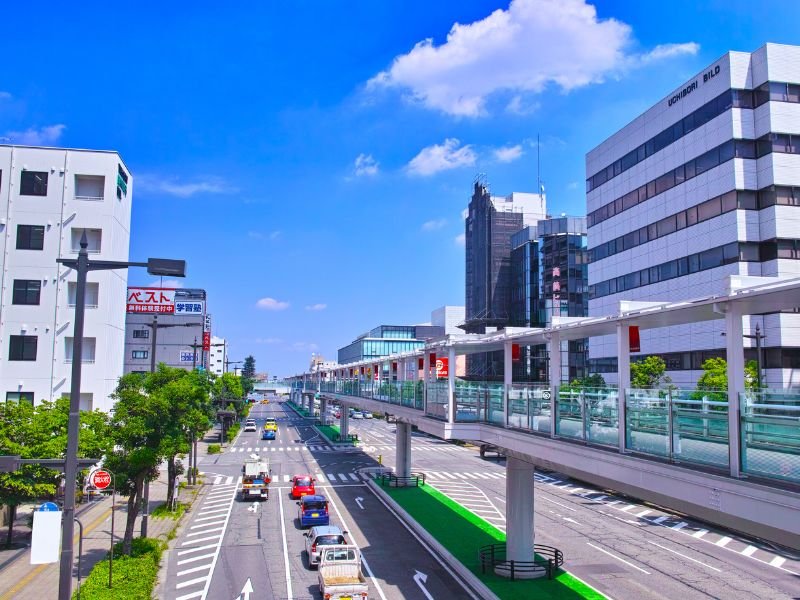
Essential Takasaki Travel Questions: Practical Answers, Daruma Culture & Gunma Day-Trip Tips
Is Takasaki worth visiting if I’m already going to Tokyo?
Absolutely. Takasaki feels like a calmer, more local slice of Japan with real standout hooks—Daruma culture, easy nature escapes, and a solid food scene—without the mega-city sensory overload. It’s the kind of place where you can have a temple-and-mountain morning, a museum or café afternoon, and still be back in Tokyo by dinner if you want.
If your Japan plan is heavy on big-name cities, Takasaki is a refresh button that still offers “only-here” experiences.
How long should I stay in Takasaki?
It depends. A focused day trip covers the headline sights near the center—Daruma-ji, the Kannon statue area, parks, and a good local meal. But a 1- to 2-night stay lets you add Mount Haruna, Lake Haruna, and a more relaxed pace without rushing train or bus connections.
If you want to mix in onsen towns or deeper Gunma day trips, Takasaki becomes a smart base for 2 to 3 nights.
What’s the easiest way to get to Takasaki from Tokyo?
Yes—train is the easy win. The shinkansen gets you there quickly and comfortably, and Takasaki Station is a major hub, so everything gets simpler from that starting point.
For most travelers, you can treat Takasaki like a “stress-free” add-on to a Tokyo itinerary.
Do I need a car in Takasaki?
Not really. The downtown area is walkable, and trains/buses cover a lot of what you’ll want to see. That said, a car becomes tempting if your plan is heavy on mountain scenery, smaller temples, fruit farms, or multiple Gunma day trips in one go.
If you love spontaneity and rural stops, that’s when renting a car starts to feel worth it.
What’s the best area to stay in Takasaki?
For convenience, staying near Takasaki Station is the simplest move. You’ll be close to transport, shopping, and an easy launch point for day trips. It’s especially helpful if your schedule includes Mount Haruna, Ikaho, Kusatsu, or Tomioka.
If you want a quieter vibe, consider accommodation closer to the Haruna area for a nature-first stay.
When is the best time of year to visit Takasaki?
Spring and autumn are the sweet spots. You’ll get pleasant walking weather and the extra bonus of cherry blossoms or fall colors, especially around park areas and the Haruna region. Summer is lively thanks to festivals, but can be hot and humid.
Winter can be excellent for onsen and crisp mountain views, just be ready for colder temperatures at higher elevations.
What should I pack for a Takasaki trip?
Bring comfortable walking shoes first and foremost. You’ll likely be doing a mix of city strolling and temple or hill-area walking. In spring and autumn, light layers are your best friend—mornings and evenings can be cool.
If you’re heading to Mount Haruna or Lake Haruna, add a warmer layer and consider a small daypack with water and snacks.
Is the Takasaki Daruma Market worth timing my trip around?
Yes. Even if you’re not a hardcore festival planner, the Daruma Market is one of those cultural events that instantly explains the city’s identity. The atmosphere is energetic, colorful, and very local—but still accessible for visitors.
If you can line it up with your itinerary, it’s a memorable way to experience Takasaki beyond the standard sightseeing checklist.
What’s the right way to use a Daruma doll?
Absolutely—this is one of the most fun cultural mini-rituals you can take home. The common tradition is to set a goal, fill in one eye, and then complete the second eye once you achieve it. That simple act turns your souvenir into a story.
Even if you’re not superstitious, it’s a charming way to connect with the spirit of perseverance that Takasaki celebrates.
Is Mount Haruna doable for casual hikers?
Yes. You don’t need to be an ultra-hiker to enjoy the area. There are gentler trails and scenic spots that still give you the mountain atmosphere without a full-on summit mission. Pairing Haruna Shrine with a stroll around Lake Haruna can feel like a perfect “soft adventure” day.
If you want a more challenging route, you can absolutely find one—just check conditions and start earlier.
Can I visit Haruna Shrine and Lake Haruna in one day?
Absolutely. These two are natural companions on the same outing. The shrine offers that forested, spiritual atmosphere, while the lake provides the scenic reset afterward. It’s a balanced day that mixes culture, nature, and great photo opportunities.
If you’re traveling in autumn, this combo is especially rewarding.
Are there good onsen options near Takasaki?
Yes. You’ve got nearby hot spring choices that range from easy local soaks to full-on onsen towns. If you want a classic “onsen street” experience, Ikaho is a great option. If you’re aiming for a bigger-name hot spring destination as a day trip, Kusatsu is the heavyweight.
This is one of the reasons Takasaki works so well as a base in Gunma.
What are the must-try foods in Takasaki?
Absolutely. Start with local staples like Mizusawa udon and yakimanju, then expand into seasonal produce and regional sake if that’s your thing. The food here feels grounded and local rather than flashy, which is a big part of the charm.
We also love treating this city as a “snack-and-stroll” destination—try a few small bites instead of committing to one massive meal.
Is Takasaki family-friendly?
Yes. The parks, open spaces, museums, and easy day-trip options make it a comfortable place to visit with kids. The pace is lower-stress than Japan’s biggest cities, and there are enough hands-on or visually engaging stops—like Daruma culture and film or history sites—to keep younger travelers interested.
If you’re traveling with a stroller, the station area and modern hotels are usually the easiest setup.
Is Takasaki accessible for travelers with mobility concerns?
It depends. The city center and station-area hotels tend to be the most accessible with flatter walking routes and modern infrastructure. Some temple and mountain sites may involve uneven paths, stairs, or short uphill stretches.
A good strategy is to base yourself near the station, prioritize the easier urban attractions, and then treat the Haruna area as optional depending on comfort and conditions.
Takasaki Travel Guide: Final Thoughts
From exploring ancient temples and hiking majestic mountains to indulging in local delicacies and relaxing in hot springs, there’s an abundance of things to do in Takasaki city. This travel guide aims to provide you with comprehensive insights to make your Takasaki visit unforgettable.
Key Takeaways:
- Cultural Richness: Immerse yourself in traditions, from Daruma dolls to historic shrines.
- Natural Wonders: Enjoy outdoor activities like hiking, boating, and fruit picking.
- Culinary Delights: Savor local specialties that offer a taste of Takasaki’s unique flavors.
Tip: Engage with the locals whenever possible—they often provide the best recommendations and enrich your travel experience with their warmth and hospitality!
Takasaki awaits in this captivating corner of Gunma Prefecture!
